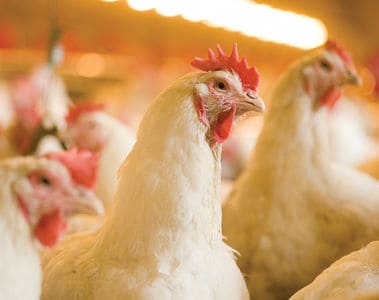Low hatchability, reduced egg quality, and impaired chick immunity are common hatchery-related challenges, and it is possible that mycotoxins could be the culprit.
Mycotoxins are unavoidable contaminants in feed that have negative effects on bird health. They are present in poultry diets worldwide, but due to their often-invisible effects, mycotoxins are frequently overlooked in parent stock farms, with the negative outcomes appearing at the hatcheries. Mycotoxins can negatively impact a diversity of indices that are necessary for the success of breeder and hatchery production: fertility, eggshell quality, efficiency of vaccine response, and quality of the progeny. Becoming informed and aware of this challenge and how to protect your birds is key to helping them reach their maximum genetic potential and, consequently, maximizing the economic success of your hatchery.
Mycotoxins negatively impact a diversity of indices connected to the performance of the breeders and their chicks and consequently affect economic indices such as:
Impaired performance of breeders and roosters
Zearalenone (ZEN) has a similar chemical structure to the hormone estrogen and is usually related to reproductive disorders. The presence of ZEN in breeder diets can modify the physiology of the reproductive tract by inducing hyperactivity of the ovaries and cystic oviducts. These alterations reflect in lower fertility rates, egg production, and hatchability of eggs. Ochratoxin (OTA) is another mycotoxin that alters embryo development, decreasing chick livability and reducing the progeny’s ability to fight infections.
Reduced egg quality
Mycotoxins such as toxin T-2, OTA, and ZEN influence eggshell formation through different modes of action: reduced calcium absorption, changes in the protein synthesis, and/or modification of the reproductive physiology in such a way that breeders and layers are not able to produce high-quality eggs. Lower quality eggs result in fewer eggs hatching, reducing the hatchery’s overall production output. Measurements that quantify the changes in egg quality due to mycotoxins include: reduced Haugh units, height of the albumen, and egg weight as well as reduced eggshell thickness and alterations in egg size.
Impaired yolk formation and reduced chick livability
The liver is responsible for lipid metabolism, which is directly correlated with the yolk formation and formation of liposoluble vitamins. The most common pathological lesions associated with mycotoxicosis in poultry are found in the liver. When liver function of the breeder hen is impaired, there is a direct link to impaired yolk formation. Since the yolk is a key component in the nutrition and health of a developing chick, this results in higher initial chick mortality.
Predisposition to ‘leaky gut’ and contamination through the hatchery
Deoxynivalenol (DON) and fumonisins (FUM) have a large impact on gut integrity. They influence the formation and functionality of tight junctions, a multi-protein complex established between closely connected intestinal cells that maintains a barrier between the gut lumen and the blood circulation. Both mycotoxins contribute to an increased permeability causing ‘leaky gut’ syndrome. As a result, the proliferation of intestinal pathogens, i.e., Salmonella sp, may also be increased. Moreover, liquid excreta leads to a higher percentage of dirty eggs, which reduces the overall hygienic status of the hatchery.
Impaired immunity and vaccine failure
Even at moderate levels of contamination, mycotoxins are considered immunosuppressive agents and are capable of downregulating antibodies and immunoglobulins synthesis. These mechanisms are attributed to mycotoxins including Aflatoxin, trichothecenes, FUM, and OTA. Their presence can be considered a driver of failure in vaccine programs. Several studies have shown that Fusarium mycotoxins such as DON reduce antibody titers for Newcastle disease and the infectious bronchitis virus in breeders.


